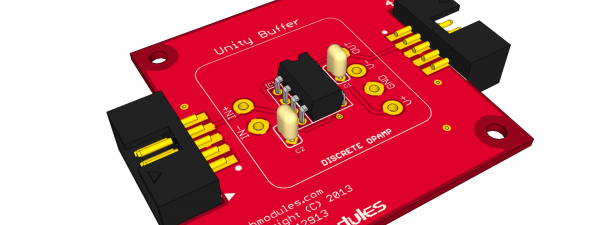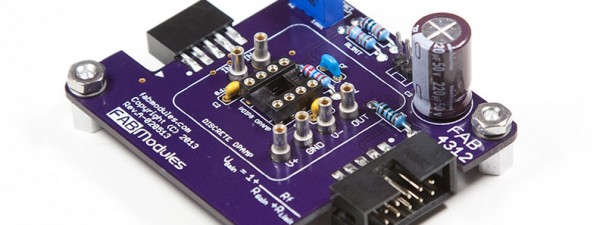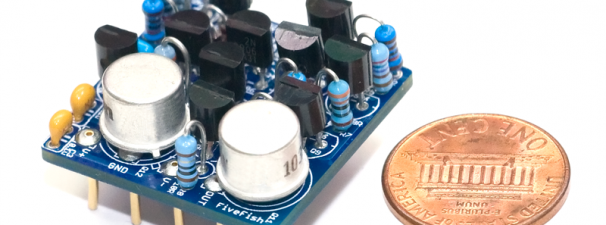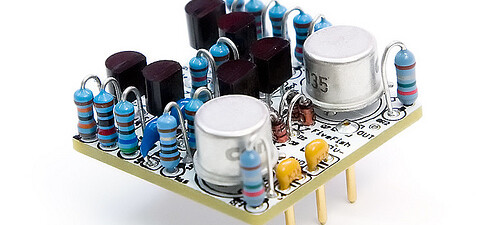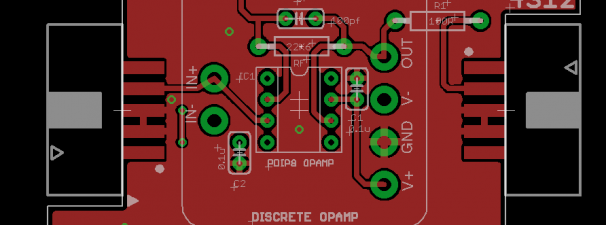The FAB4300 Module is a Unity Buffer Amplifier Module, utilizing either a PDIP8 chip, or a Discrete OpAmp.
It has a single-ended input, and a single-ended output. The output of the OpAmp is connected back to it’s inverting input (IN-), while the input signal is applied to the non-inverting input (IN+). The output of the OpAmp basically follows whatever is the input signal applied to IN+, thus it’s named a voltage follower.
While the FAB4300 does not offer any amplification to the input signal, it serves a very important function. The input impedance of the FAB4300 Module is very high, meaning that the FAB4300 does not load down the signal source. At the same token, the output impedance of the FAB4300 Module is very low and thus it can drive loads very efficiently without any apparent loss in signal. You can say the FAB4300 acts like an impedance bridging circuit.

